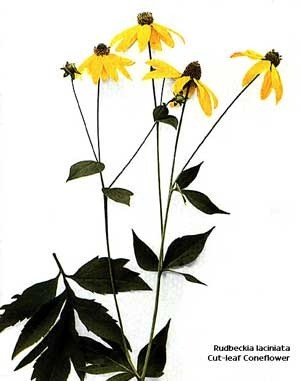
| Botanical Name: | Rudbeckia |
| Life Cycle: | perennial |
| Planting Time: | spring or fall |
| Height: | 1' to 9' depending on type |
| Exposure: | full sun to light shade |
| Soil: | average to rich, evenly moist, well-drained soil |
| Hardiness: | zones 4 to 10 depending on variety |
| Bloom Time: | summer to fall |
| Flower: | yellow to red-brown and rusty orange daisy-like petals with brown or black centers. |
| Foliage: | green |
| Propagation: | seeds or division |
| Suggested Use: | beds, borders, and native plantings |
| Growing Hints: | Purchase plants in spring or start them from seeds sown directly into the garden in the spring or fall. Seeds can also be sown in pots in early spring or fall and set outdoors in a protected location. The exception is Gloriosa seeds. They should be sown either several weeks before the last frost if sown indoors, or two weeks before the last frost date if sown outdoors. Press seeds gently into the soil, but don't cover them. They need light to germinate. Once established, plants are quite drought tolerant and readily reseed themselves. Biennial varieties tend to alternate weak and showy years. |
| Interesting Facts: | Rudbeckia are native American wildflowers and are wonderful for attracting birds such as chickadees cardinals, sparrows, and nuthatches. |

Add your voice! Click below to comment. ThriftyFun is powered by your wisdom!